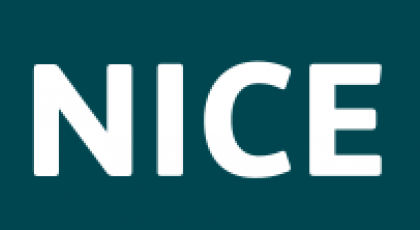Suspected neurological conditions: recognition and referral (QS198)
Published: 08 January 2021
This quality standard covers assessing and referring children (under 16) and adults (16 and over) who have symptoms or signs associated with neurological conditions. It describes high-quality care in priority areas for improvement.

Putting Guidance into Practice
Published January 2020
Dorset County Hospital Foundation Trust introduce the Cerebral Palsy Integrated Pathway to improve access to care and management using a standardised surveillance programme for children diagnosed with CP.

Cerebral palsy in adults (QS191)
Published 31 January 2020
This quality standard covers care and support for adults with cerebral palsy (aged 25 and over). It describes high-quality care in priority areas for improvement.

Suspected neurological conditions: recognition and referral (NG127)
Published 01 May 2019 (Last updated 04 July 2019)
This guideline covers the initial assessment of symptoms and signs that might indicate a neurological condition. It helps non-specialist healthcare professionals to identify people who should be offered referral for specialist investigation.

Putting Guidance into Practice
Published March 2019
Poole Hospital NHS Foundation Trust implement recommendations from NICE guideline CG145, Spasticity in under 19’s: Management (2012) by establishing a progressive resistance strength training group for children with Cerebral Palsy.

Cerebral palsy in adults (NG119)
Published 15 January 2019
This guideline covers care and support for adults with cerebral palsy. It aims to improve health and wellbeing, promote access to services and support participation and independent living.

Cerebral palsy in children and young people (QS162)
Published 10 October 2017
This quality standard covers diagnosing, assessing and managing cerebral palsy in children and young people under 25. It describes high-quality care in priority areas for improvement.

Cerebral palsy in under 25s: assessment and management (NG62)
Published 25 January 2017
This guideline covers diagnosing, assessing and managing cerebral palsy in children and young people from birth up to their 25th birthday. It aims to make sure they get the care and treatment they need for the developmental and clinical comorbidities associated with cerebral palsy, so that they can be as active and independent as possible.

Spasticity in under 19s: management (CG145)
Published 25 July 2012 (Last updated 29 November 2016)
This guideline covers managing spasticity and co-existing motor disorders and their early musculoskeletal complications in children and young people (from birth up to their 19th birthday) with non-progressive brain disorders. It aims to reduce variation in practice and help healthcare professionals to select and use appropriate treatments.

Selective dorsal rhizotomy for spasticity in cerebral palsy (IPG373)
Published 15 December 2010
This interventional procedures guidance was issued to the NHS in England, Wales, Scotland and Northern Ireland on Selective Dorsal Rhizotomy for spasticity in Cerebral Palsy.
All NICE products on Cerebral Palsy
Includes any guidance, advice, NICE Pathways and quality standards

